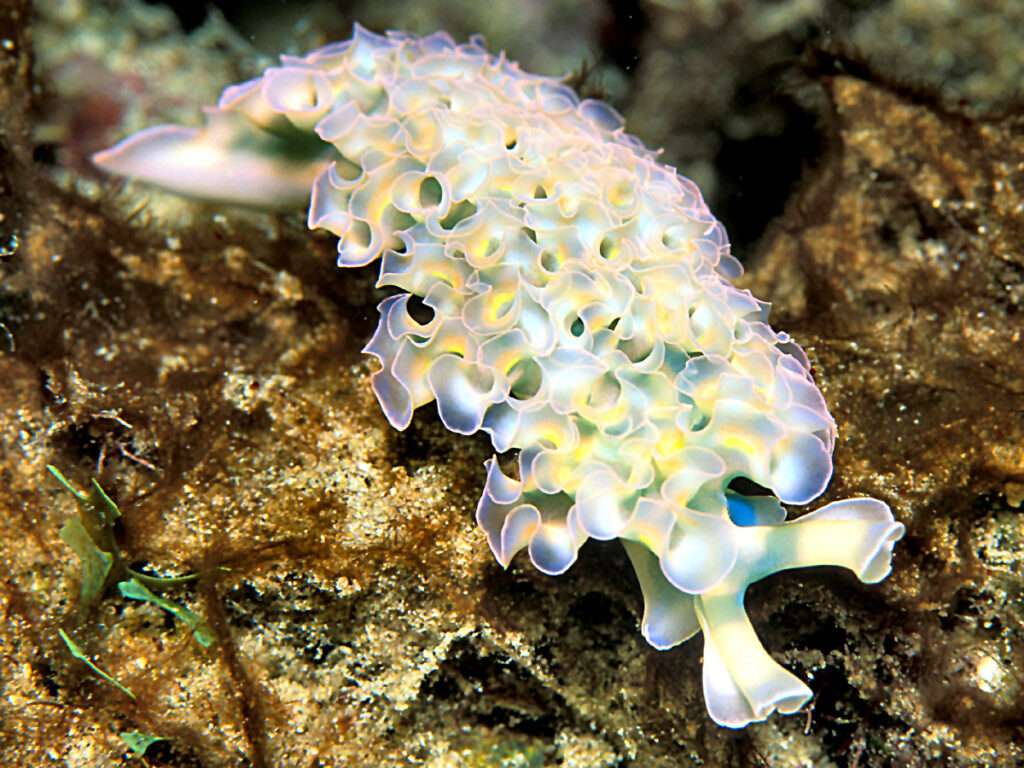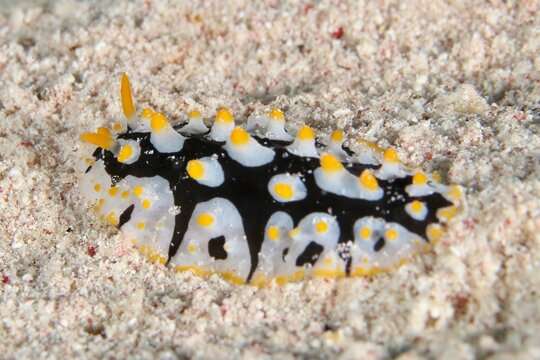
Description
A kind of vibrant sea slug known as a nudibranch is called Triopha catalinae, sometimes known as the sea clown triopha or sea clown. Very large individuals may occasionally be extremely greyish, ground colour transparent greyish-white. 4–9 slightly protruding, big orange tubercles on the pallial ridge bear very little branches or tubercles. Numerous irregular, orange tubercles and blotches of varied sizes can be found on the dorsum, dorsal surface of the tail, and the sides of the body. There are 7–16 or more irregularly lobed, orange processes at the frontal veil margin. Rhinophores have 20–30 lamellae, and the orange clavus is slightly angled to the back. It can be distinguished from the more rarer Crimora coneja by its orange-tipped branchial plumes, which have white branchial plumes and dark brown to black tipped dorsal processes.
Geographical Distribution
This species can be found in Japan and South Korea in addition to the Western Pacific, which extends from Alaska to Mexico.

Keeping as Pet
Due of their high sensitivity to variations in water factors including pH, temperature, and salinity, sea clown nudibranchs require exact and consistent water quality in their aquarium. Even for seasoned aquarists, maintaining ideal water conditions in a house aquarium may be fairly difficult.
Additionally, clown nudibranchs have a specialized diet that, according on the nudibranch species, may include particular types of sponges, sea anemones, or hydroids. The necessary food source for these sensitive organisms may not be attainable for beginners to offer on a regular basis. Numerous nudibranchs only live a few weeks to a year on average, which makes them unsuitable as long-term pets.
Table





